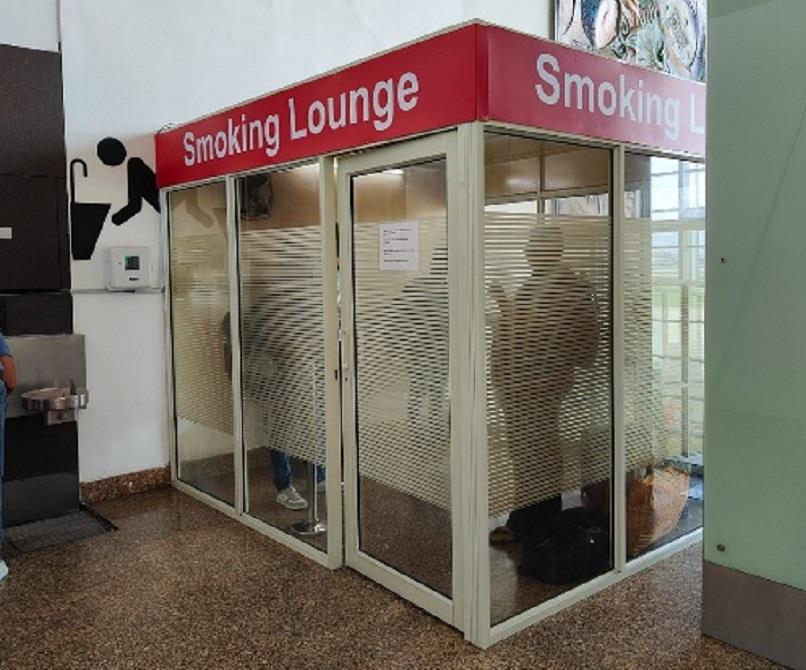Inside The Smoking Lounge: A Modern Chamber Of Self-Destruction
Inside the Smoking Lounge: A Modern Chamber of Self-Destruction
By Vikas Thakur
As I watched a steady stream of people entering a small cubicle labeled 'Smoking Lounge' opposite the washrooms at the airport, Mark Twain's famous quote came to mind:“Giving up smoking is the easiest thing in the world. I know because I have done it thousands of times.”
It was like the irresistible pull of a candle flame for a moth. I couldn't help but think of the victims of the Holocaust, pushed into gas chambers a century ago. Yet here, people were willingly entering their own chamber. A Nazi from a hundred years ago would have struggled to hold back a chuckle, I thought.
All the graphic warnings on cigarette packs seemed to have zilch effect on these men. Even the prohibitive costs, inflated by exorbitant taxes, failed to deter them.
I noticed no women heading toward the smoking lounge, which brought me some solace, having often heard that smoking is rapidly gaining ground among the fairer sex these days.
Tobacco was introduced to India by the Portuguese during Akbar's reign as a product with medicinal properties. Thanks to the nicotine it contains, tobacco has a calming and sedative effect. Jahangir, however, recognized its addictive and harmful qualities and banned its consumption. This gave him the distinction of being the only ruler in Indian history to impose such a ban.
Tobacco was smoked differently across social classes: the elite used hookahs, mendicants smoked chillums, and the poor resorted to bidis. The 'hookahburdar' was the servant responsible for carrying the hookah, filling it with aromatic additives, and lighting it when demanded by his master.
Even the British embraced this custom with great enthusiasm. Early British dinner parties in India often ended with a hookah session, where personal hookahs were provided by the respective hookahburdars.
The flexible pipes, referred to as 'snakes', wound in a serpentine fashion, creating an elaborate network leading to each smoker.
Cigarette smoke contains more than 4,000 toxic chemicals, including 60 known carcinogens. In India, 90 percent of lung cancer cases are linked to smoking, and smokers are 10 times more likely to develop cancer. Nicotine is 10 times more addictive than heroin.
Alarmingly, 38 percent of children under five are exposed to secondhand smoke at home, leading to permanent health damage. Even fetuses in the uterus suffer due to smoking in the household.
Despite these well-documented facts being easily accessible to today's generation through various media, there is no noticeable decline in smoking.
We endured smoking in public spaces silently until 2003, when a comprehensive ban was introduced.
Before that, smoking in public buses was common, making the motion sickness of nonsmokers, including children, even worse.

Legal Disclaimer:
MENAFN provides the
information “as is” without warranty of any kind. We do not accept
any responsibility or liability for the accuracy, content, images,
videos, licenses, completeness, legality, or reliability of the information
contained in this article. If you have any complaints or copyright
issues related to this article, kindly contact the provider above.
Market Research

- Gas Engine Market Analysis: Strong Growth Projected At 3.9% CAGR Through 2033
- Daytrading Publishes New Study On The Dangers Of AI Tools Used By Traders
- Excellion Finance Launches MAX Yield: A Multi-Chain, Actively Managed Defi Strategy
- United States Lubricants Market Growth Opportunities & Share Dynamics 20252033
- ROVR Releases Open Dataset To Power The Future Of Spatial AI, Robotics, And Autonomous Systems
- Blackrock Becomes The Second-Largest Shareholder Of Freedom Holding Corp.



















Comments
No comment